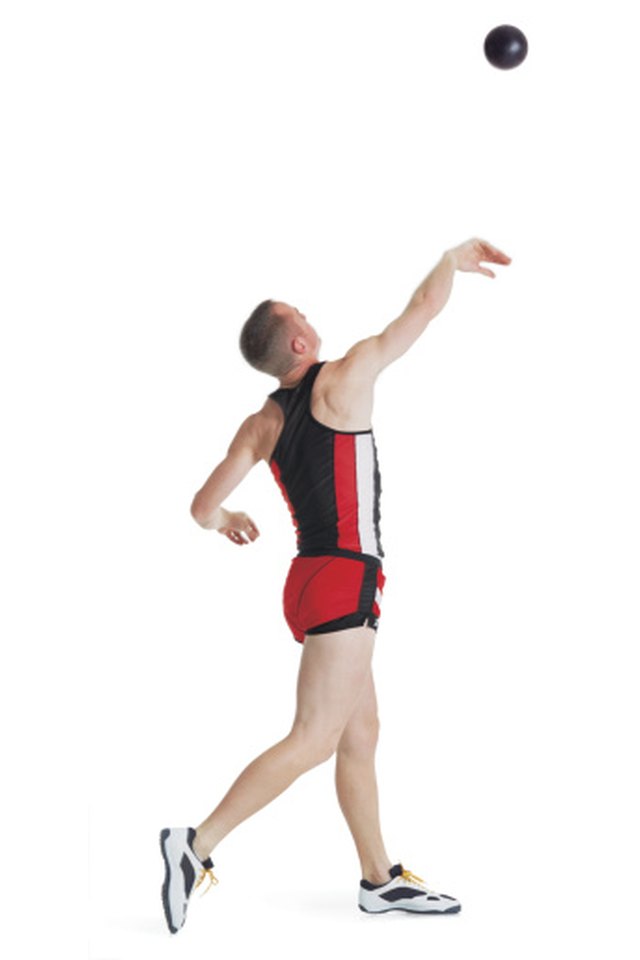Shot Put Spin Vs. Glide

Benefits of the glide method versus the spin has been a long-debated question in the world of track and field. Athletes have been successful at all levels with both methods. There are pros and cons to both, and each comes with its own set of advantages in teaching and training. Learning what each technique has to offer can help both the coach and athlete decide which is best.
Power Position
The glide and spin techniques are both means of moving across the shot put circle to get into the power position. No matter what movements are made to get there, getting into this proper position is the key to success for any thrower. An athlete can have picture-perfect technique getting across the circle, but if that fails to get him into the power position, the approach is useless. Proper execution of either method should always result in the thrower being in the proper power position so he can put the full force of his body behind the throw.
Glide
The glide is where many throwers start. It is a natural progression from learning to throw from the power position. It begins with the athlete at the back of the circle with his back to the direction of the throw. Generally, the athlete will start by thrusting his nonweight-bearing leg back while pushing off with the leg closest to the back of the circle. If the thrower uses the proper technique, it will put him at the front of the circle in the power position. It allows the thrower to gain momentum and increase force. Though perfecting the technique can take years, it is relatively simple to learn.
Spin
The spin technique is generally viewed as a more complex method of moving across the circle into the power position. As with the glide, the thrower starts with his back to the front of the circle. The athlete will pivot on the foot that will ultimately end up closest to the toe board. At the same time, he will use a whipping motion with the other leg to begin the spin. The thrower will then perform a run step and pivot off that foot to turn the body into the power position. The spin technique has more moving parts, so it generally takes longer to master. However, one advantage is generating more momentum and maximizing the period of time that force is put into the shot.
Best Method

IPGGutenbergUKLtd/iStock/Getty Images
Choosing which method is best largely depends on the athlete and the coach’s ability to properly teach the technique. The spin method, when properly performed, allows for more momentum and force to be put into the implement. It also creates more horizontal velocity that can potentially result in a longer throw. However, the complicated nature of the spin and the increased moving parts can result in the thrower being off balance and jeopardize his ability to get into the power position. This often results in shorter, offline throws and fouls. Errors in form can affect the glide method as well, but for inexperienced throwers, the glide is an efficient way to begin. The glide will not produce the same amount of force and momentum in the throw, but it can be effective in teaching the athlete the importance of the power position. Once this is mastered, give the spin a try and see if it can yield better results.
References
Writer Bio
Mike Belfiore started writing professionally in 2011. He has extensive experience in the field of sports management, athletics, recreation and fitness, and also coaches collegiate track-and-field. Belfiore holds a Bachelor of Science in physical education, as well as a Master of Arts in recreation management from SUNY Cortland.
